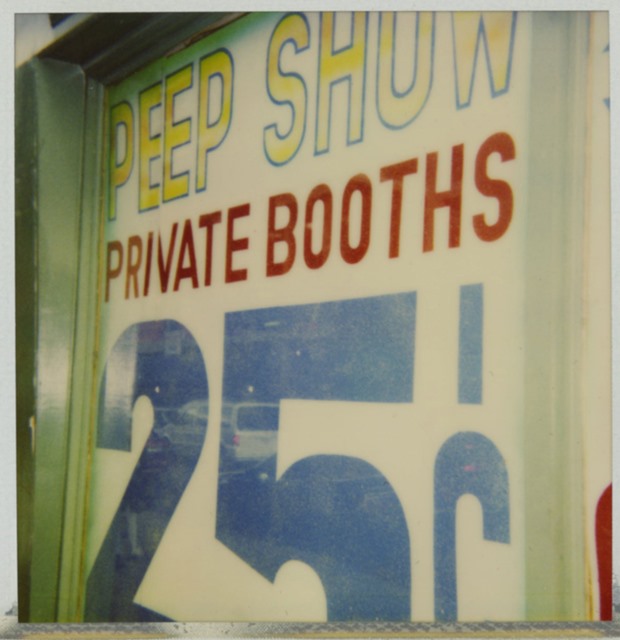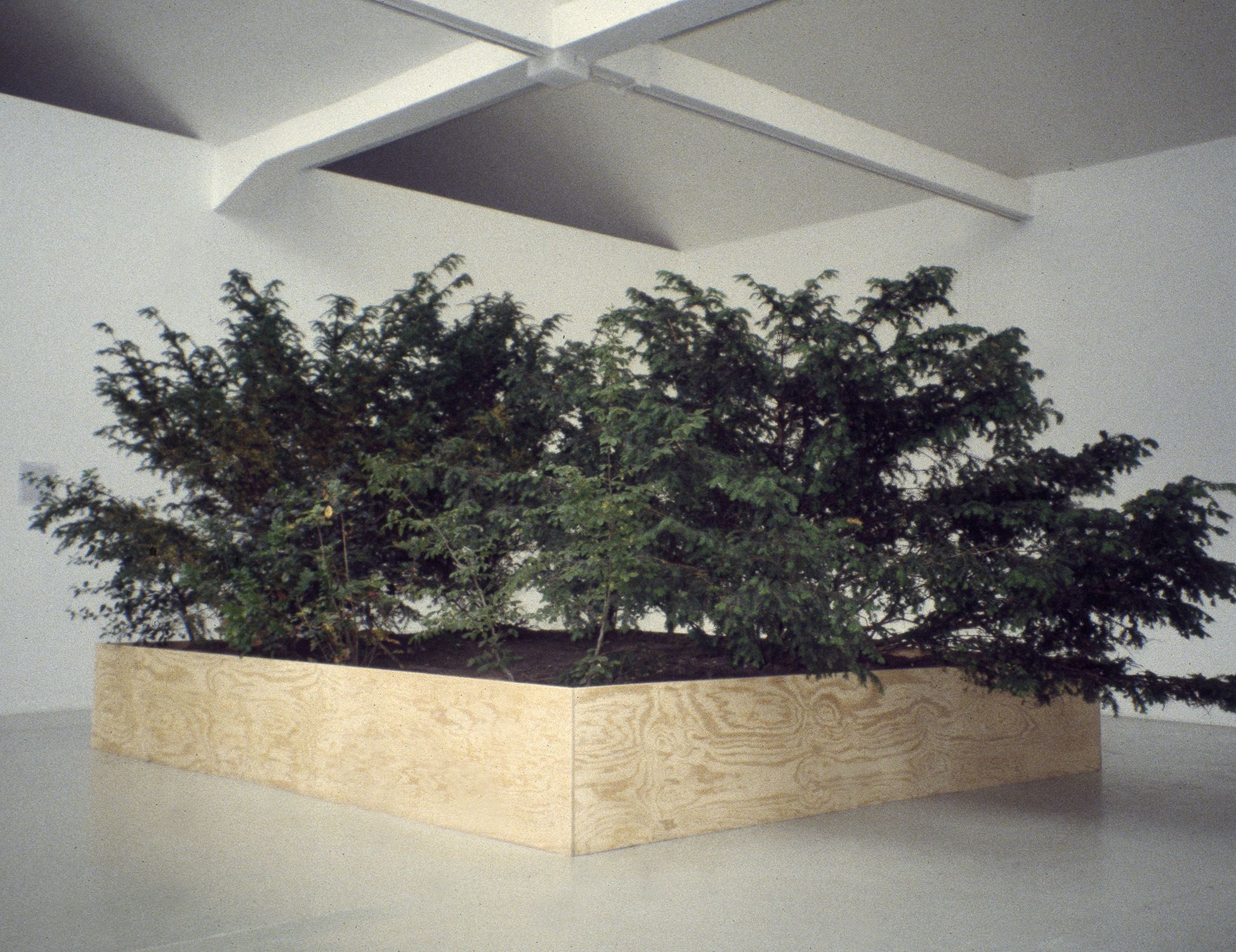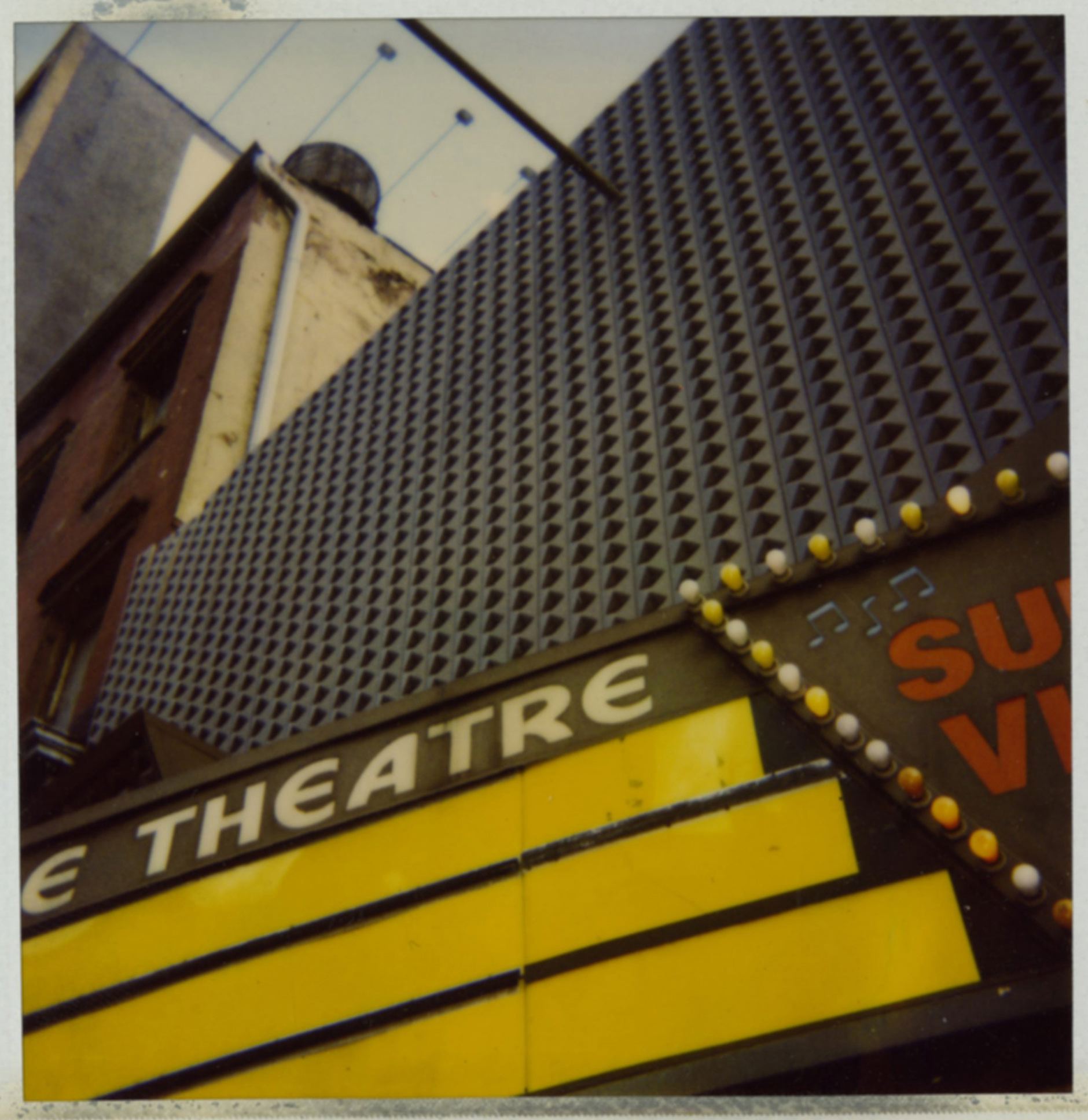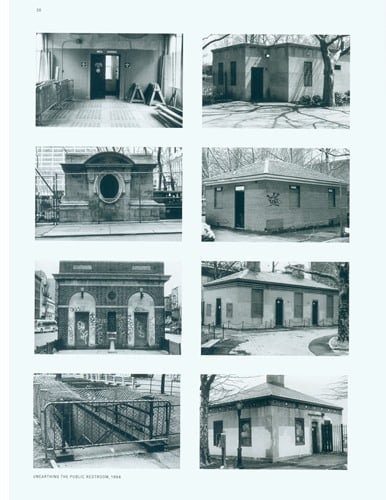Art & Exhibitions
Cruising Grounds and Peep Shows Come to Life in Tom Burr’s Latest Show
Times Square's seedy past returns in brilliant color.

Photo courtesy Bortolami.
Times Square's seedy past returns in brilliant color.

Brian Boucher

Giant bags of potting soil and some shrubs, their roots encased in burlap bags, sat in the entryway at New York’s Bortolami Gallery this week, where artist Tom Burr was in mid-installation of his new show, “Circa.” Workers in the gallery’s main room were constructing a wooden frame for what would become Circa ’77, a sculpture that re-creates a small slice of an urban park, complete with dirt and fauna.
Burr invited a visitor to stow his things in the gallery’s storage space out back. “Just come this way, through the earth room,” he joked, referring to Walter De Maria’s New York Earth Room, the long-term installation in Soho, maintained by the Dia Art Foundation. (Funny enough, the work dates from 1977, the very year evoked in Burr’s large sculpture.)
Burr’s sculpture re-creates not just any urban green space, but rather a bit of Platzspitz, a riverside park in Zurich that was once a popular gay cruising ground. When Burr first created the work, for Kunsthalle Zürich in 1995, he was imagining that parcel of land as it had been about twenty years before, when it was a zone of eros and danger. It would then become a haven for drug users before being cleaned up by the city in the mid-‘90s, when Burr arrived.

Tom Burr, Circa ’77 (1995), wood, soil, trees, found objects.
Photo courtesy Bortolami.
Surveying the workers’ progress, he said he had made efforts to find locally accurate fauna. “I was looking for specific kinds of plants,” he said, “and I ended up getting them mostly by approaching my neighbors upstate. Often they said, ‘Oh, please, yes, take that thing away!’”
Recreated in New York, the work evokes the city’s bygone gay cruising grounds, especially the Ramble, an area in Central Park. So while the work was created to be site-specific, it now has a different sort of site-specificity. (By no coincidence, a new book, Tom Burr, Anthology: Writings 1991-2015, includes texts that point out the Ramble’s location between the Metropolitan Museum of Art and the Museum of Natural History, placing sites of gay connection in a cultural context.)
And the reference to De Maria’s Earth Room, Burr explained, wasn’t just a joke. The new setting, he said, inevitably lends the work different resonances.
“It challenges a traditional kind of site-specificity,” he said. “The piece will self-consciously have a different relationship to a different site.” In a similar vein, Burr has also created a half-scale replica in purple (not in this show) of Richard Serra’s famous 1981 sculpture Tilted Arc, which has traveled to various locales, picking up new meanings along the way.

Tom Burr, Untitled (from 42nd Street Structures) (1995), Polaroid photograph.
Photo courtesy Bortolami.
A group of gorgeous Polaroid photographs in the new show depict Times Square’s bygone porn theaters and peep shows. Their colors are remarkably sharp, their compositions defined by close cropping and stark angles.
“I showed other Polaroids from the same time in 1995,” Burr said. “Then, they hung in grids, in a more informational presentation. Polaroids weren’t so exotic then. These, which I didn’t show at the time, were in storage boxes ever since. I see these more as single moments, so we’ve framed them for a more fetishized presentation.”
At that time, Mayor Rudolph Giuliani was on a moral and capitalist crusade, cleaning up the seedy Times Square area to make way for a corporate invasion, a process that has only metastasized since. “That was when we began to see this happening,” Burr said, “the hyper-development and homogenization wrought by neoliberalism.”
Other photographs, from the series “Unearthing the Public Restrooms,” capture in clinical black and white the architecture, sometimes bland, sometimes remarkably grand, of another area of Gotham where gay men furtively met. One entry in the book assembles excerpts of decades’ worth of writings on these facilities.

Tom Burr, Unearthing the public restrooms (1994).
Photo courtesy Bortolami.
The companion series “Palm Beach Views,” by contrast, explores what Burr calls “the neuroses of private space,” depicting high hedges surrounding posh homes.
Burr’s show comes at a time when we seemingly cannot get enough of looking back to the New York of yesteryear. Patti Smith published her memoir Just Kids in 2010, Rachel Kushner her novel The Flamethrowers three years later, and this year, Garth Risk Hallberg gave us City on Fire, his nearly thousand-page novel on the 1977 blackout. In the art world, just the latest example is MoMA PS1’s “Greater New York,” which co-curator Douglas Crimp described as presenting possible models from that history for what New York artists can do now. (See artnet News’ video visit to that show here.)
Though looking back is often tied up with nostalgia, for Burr, it’s more about memory, and the institutionalization of memory. He pointed out that along with “Greater New York,” there have also been recent shows at the Hammer Museum and MUMOK, in Vienna, both including his work, that look back to the 1980s and ‘90s. Burr’s show, too, is self-consciously about the backward gaze: it centers on a sculpture that he first showed twenty years ago, which in turn looked back to a time twenty years prior to that.
“What gets put in an archive and permanently remembered?” he asked. “These are ways of consciously creating a history.” Without that institutionalization, memories disappear when those who hold them are no longer around. And absence and loss of that sort is never far from those who survived the ravages of the AIDS epidemic.
Talking about Circa ’77, the artist alluded to his own mortality as well. If a museum wanted to buy the piece, he said, it wouldn’t necessarily be the version that was under construction in front of him.
“It would be more about a set of instructions,” he said, “although it would be about me being involved with it for as long as I could be.”
Tom Burr’s “Circa” is on view October 29-December 23, 2015.